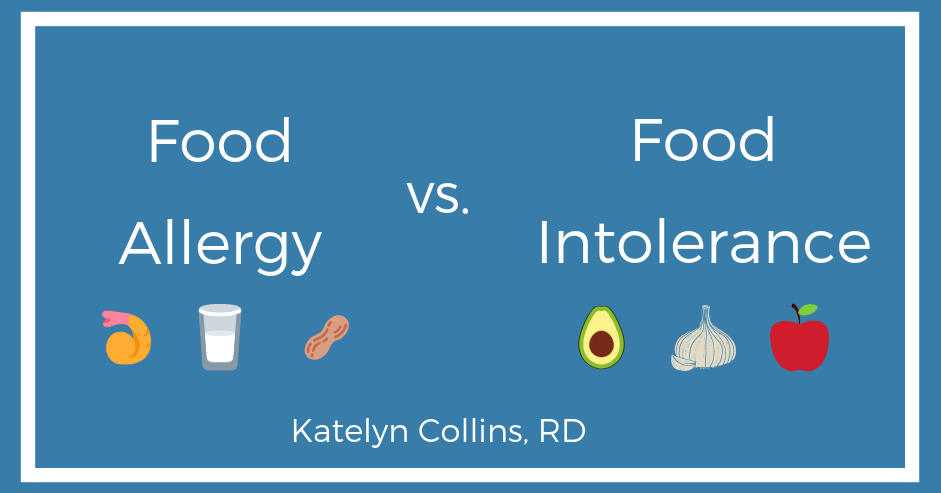Food Allergy vs Food Intolerance: What’s the Difference?

If you are finding success on the low FODMAP diet, do you have a food allergy or a food intolerance?
Food allergy vs food intolerance
Food allergies cause an immune response that can have a widespread impact in the body and can cause anaphylaxis. Anaphylaxis happens soon after consuming an allergen and the symptoms include rapid pulse, skin rash, nausea, and/or vomiting. The reaction can be life threatening and requires an immediate trip to the hospital. Peanuts, tree nuts, soy, eggs, wheat, and milk are all common food allergens.
Food intolerances, on the other hand, are not as serious as food allergies. Digestive symptoms occur after a certain amount of a food has been eaten. Although the symptoms may be extremely debilitating at times, food intolerances are not life threatening. Food intolerances can be caused by a variety of conditions such as sensitivity to additives like sulfites, lack of an enzyme needed to break down a certain food like in lactose intolerance, or the presence of our good friend irritable bowel syndrome (IBS).
If you have found that FODMAPs trigger your IBS symptoms, you have an intolerance to FODMAPs and not an allergy.
Reading food packages
If you believe you have a food allergy, it’s important to speak with your doctor about getting tested because there is always the possibility of a life-threatening reaction. Additionally, if you have a severe allergy, it’s essential to avoid any products that were made in a facility that also processes the foods you’re allergic to.
If you experience cramps, diarrhea, and/or bloating after eating certain foods, you most likely have an intolerance to those foods. If you have an intolerance to FODMAPs, you can see if the particular products have been tested by Monash University.
You may notice that some packaged products say that they may contain traces of certain allergens. This is because they are made in a facility that also processes these products. This warning label is required by the FDA and is added for the safety of those with severe food allergies.
Final thoughts for those on the Low FODMAP diet
A food allergy is a potentially life-threatening condition that calls for complete avoidance of the allergen, while a food intolerance is usually limited to GI symptoms and is not life threatening. Those with food intolerances do not need to worry about trace amounts of a poorly-tolerated ingredient because trace levels are most likely not high enough to cause symptoms.
Luckily, tolerance to FOMDAPs can improve and you should be able to add some high FODMAP foods back into your diet after the initial strict elimination phase. If you are getting stuck at this step, an experienced registered dietitian (like me!) can help guide you through the reintroduction phase so you can broaden your diet.
Ready to get to the root of your IBS symptoms?
Click here to learn how to work with me!